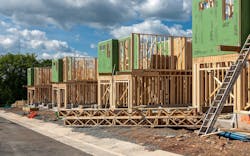Single-Family Built-For-Rent Starts Surge in Q2 2022
The single-family built-for-rent (SFBFR) market posted strong gains throughout the second quarter of 2022, even as affordability concerns posed significant challenges for new buyers and renters. NAHB’s analysis of data from the Census Bureau’s Quarterly Starts and Completions by Purpose and Design revealed a 91% year-over-year gain in SFBFR starts with a total of 21,000 in Q2 2022 alone, Eye on Housing reports.
A booming SFBFR market is indicative of a slowdown in home sales despite strong demand from would-be buyers. Rather than settling for higher borrowing costs and hefty down payments, buyers are instead turning to the rental market to find single-family homes with less commitment and greater affordability.
Over the last four quarters, 69,000 such homes began construction, which is a 60% increase compared to the 43,000 estimated SFBFR starts in the prior four quarters.
With the onset of the Great Recession and declines in the homeownership rate, the share of built-for-rent homes increased in the years after the recession. While the market share of SFBFR homes is small, it has clearly been trending higher. As more households seek lower density neighborhoods and single-family residences, a growing number will do so from the perspective of renting. This will be particularly true as mortgage interest rates remain elevated and increase. Thus, the SFBFR market will expand in the quarters ahead.
